
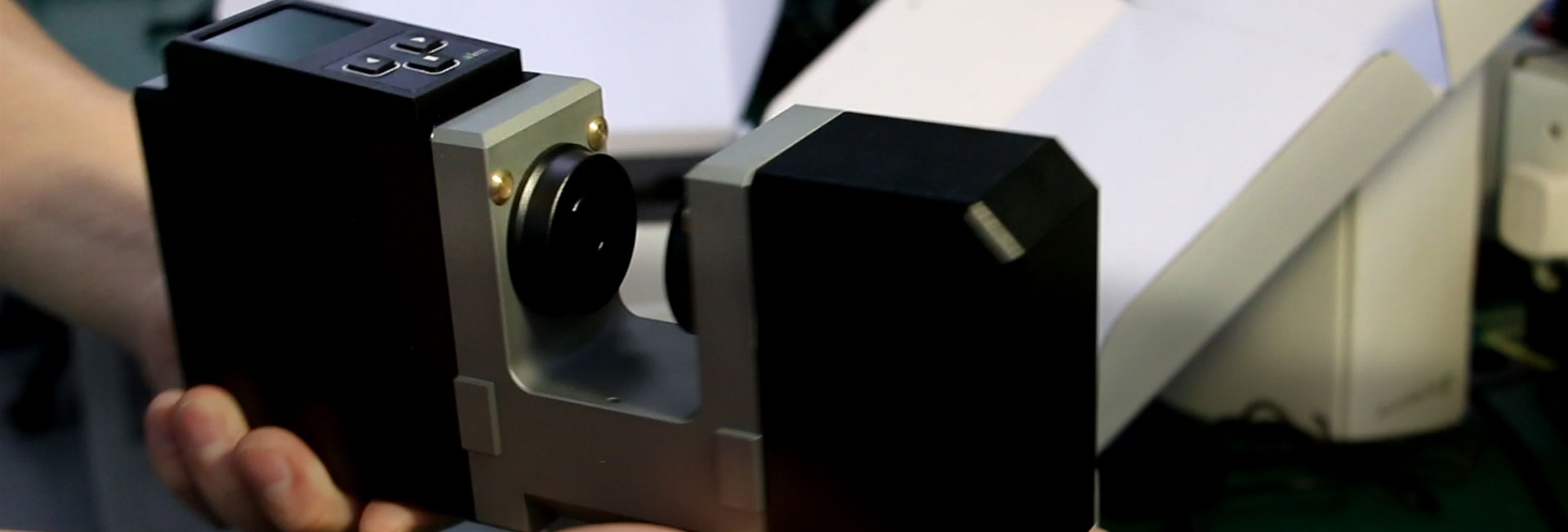
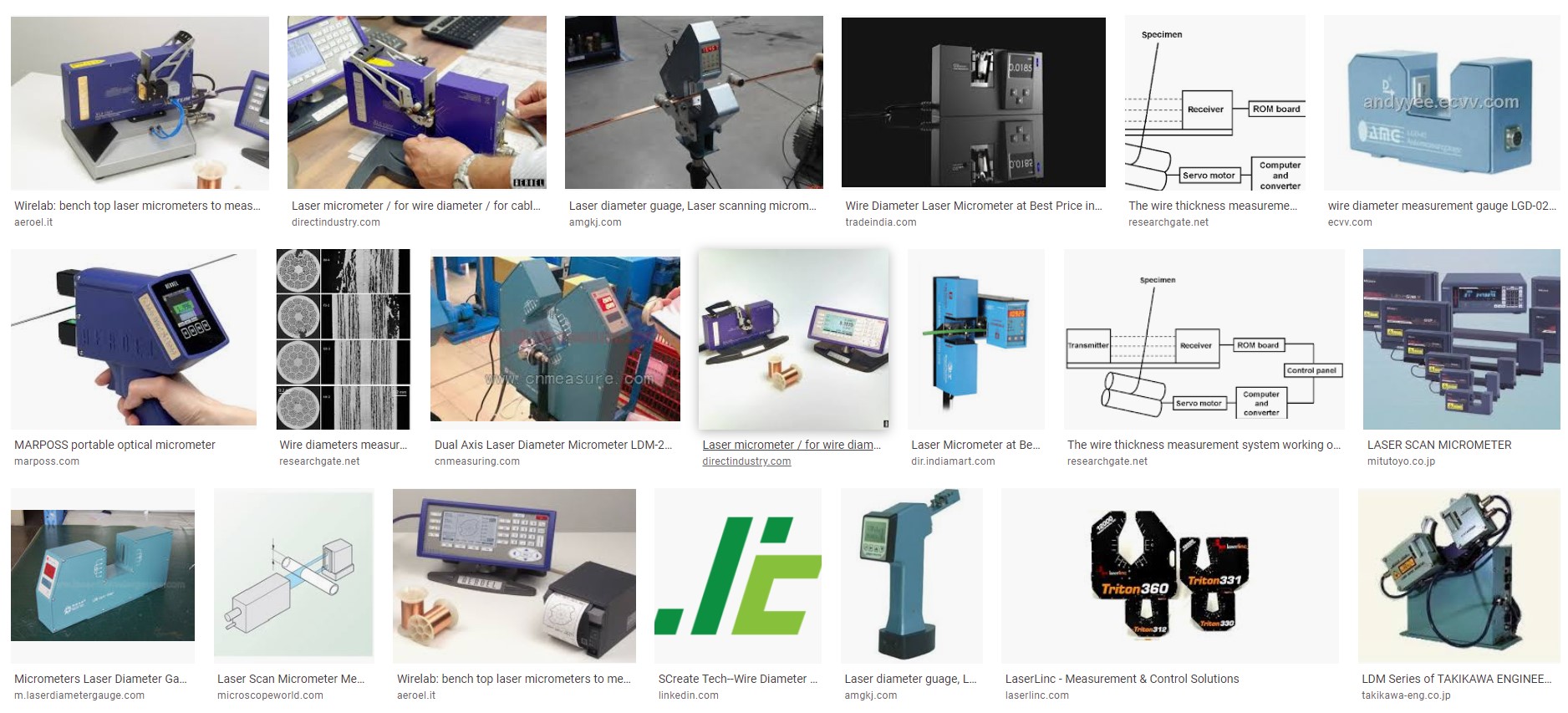
If you google laser micrometer, there are so many products and brands in the market. It is not necessary and may no need for users to know-how of different technical principles applied in laser micrometers, but if you studied a bit more about the pros and cons of them will be easier to decide which type of laser micrometer you should select from.
Laser Micrometer
An instrument that use laser beam and sensors to measure diameter, can be found with different names: laser micrometer, laser diameter gauge, laser scan micrometer, diameter laser sensor so on. All of them, no matter what name it is called, can be divided in three categories by technical principles: Laser Scanning, Laser Diffraction, image projection. In this article, we are going to introduce the Pros & Cons among the three technical principles.
>Laser Scanning
A laser scan micrometer uses a rotating optical element (mostly a rotating mirror) to reflect or refract a laser beam across the measuring range, every object placed in the measuring field interrupts the laser beam and builds its shadow on the receiver, that persists for a time be calculated proportional to the size of the object.
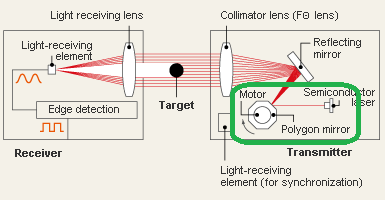
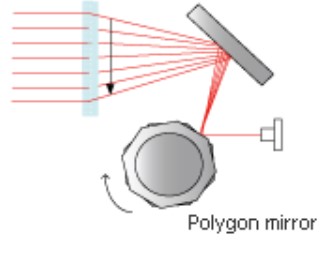
* Image from keyence: https://www.keyence.com/products/measure/micrometer/tm-3000/features/feature-03.jsp
Pros:
- A mature technology with more brands to choose.
- Reliable performance with condition: the device must be under routine maintained.
- Less sensitive to dust.
Cons:
- Provide no real-time measurement data.
- Lower repeatability and durability caused by vibration or displacement of rotating mirror.
- Costly for high scanning resolution version and routine maintenance required.
- Higher variability from unit to unit as more optical components inside.
Brands: Mitutoyo、BETA LaserMike、Zumbach、Proton products、Takikawa, AMG Tech, Splendor, LST.
>Laser Diffraction
Laser diffraction includes two different theories: Fraunhofer Diffraction & Fresnel diffraction.
Laser diffraction measures particle size distributions by measuring the angular variation in intensity of light scattered by a particle as a laser beam passes through, is directly proportional to the particle size.
Note, there are two theories of diffraction, Fraunhofer Diffraction & Fresnel diffraction, and both of them are applied in laser micrometers.
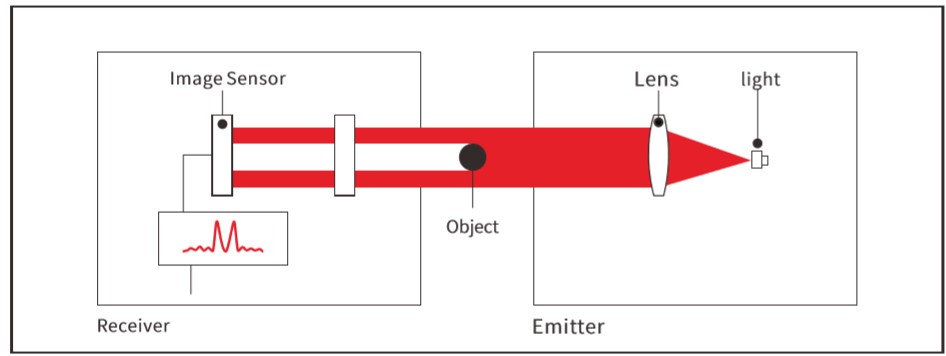
Fraunhofer Diffraction
Pros:
- No moving parts inside, delivers long durability.
- Repeatability - large numbers of particles are sampled in each measurement.
- Excellent in the range from submicron to the millimeter size range
- Long durability with no need of routine maintenance and recalibration.
Cons:
- Only feasible for fine wire or ultra fine wires.
- Bit of sensitive to dust, need extra mechanical design to insulate from dust in its measuring field.
Brands: Cersa-MCI, SCreate DALA
Fresnel diffraction
This particular theory needs no optical components, but at least two measure heads (at least dual-axis) and two sensors, but still it reads (calculate) diameter in real-time.
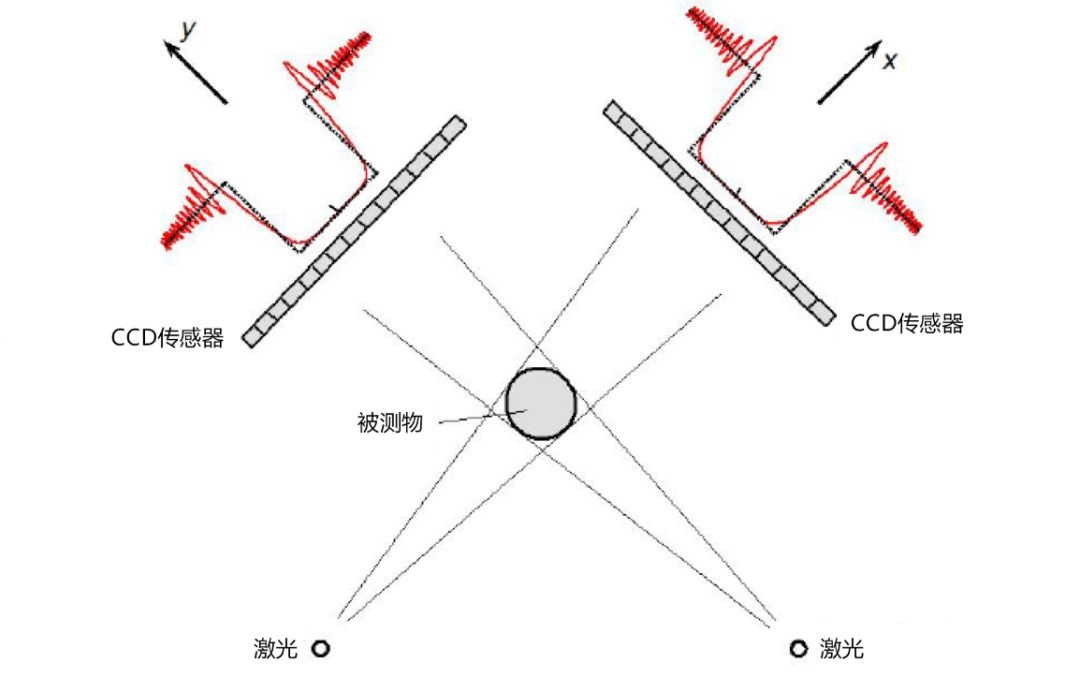
Pros:
- No moving parts inside, delivers long durability.
- No optical lens, probably the most reliable solution as it requires no maintenance at all in the three principles.
- Wide dynamic range
Cons:
- Technical barrier is higher, less players in the field.
- Sensitive to dust, need extra mechanical design to insulate from dust in its measuring field.
- Not feasible to measure down to 0.05 mm.
Brands: Sikora, SCreate DALA.
>Optical Image Projection
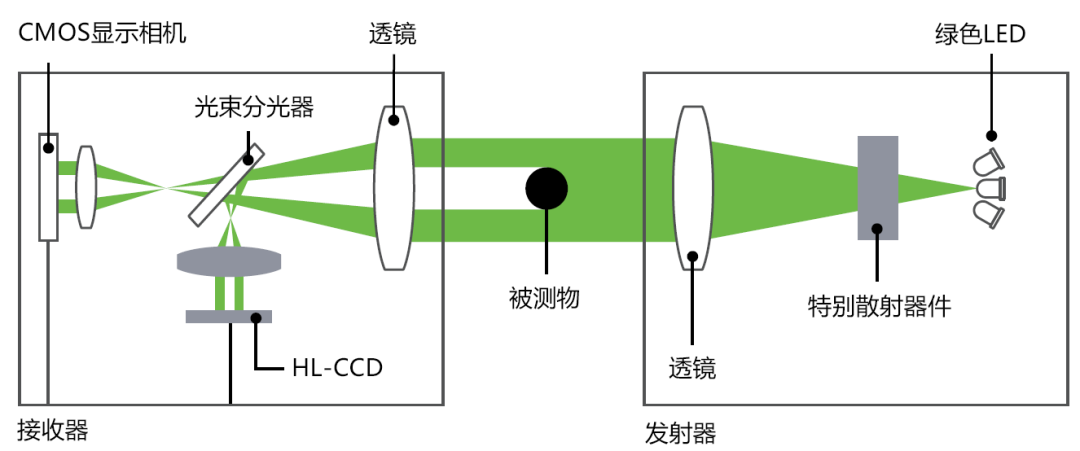
Pros:
- No moving parts (rotating mirror) inside.
- Mature technology, reliable performance.
Cons:
- Amplitude attenuation of light source may pull down the performance.
- Sensitive to dust on lens surface.
- Not an ideally solution for ultra fine wire measurement.
Brands: Keyence, Lanpeng.
Conclusion:
- If you want to measure a range not includes ultra fine (<0.05 mm), Laser micrometers with either principles of scanning or image projection is recommended.
- For measuring fine wire and ultra fine wires, as only two players in the market, SCreate DALA or Cersa-MCI is the brand you should explore.
- If both diameter and ovality are desired, Sikora and SCreate DALA are the options you have.